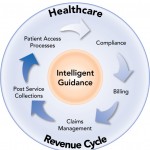
Open Enrollment 2015 | Enrolling in the Marketplace
Open enrollment doesn’t start for a couple more days, but if you’re shopping around the health insurance marketplace, you know that the “window shopping” phase of enrollment has already begun. If you remember the marketplace 1.0 fiasco from last year, and are hesitant to give the new and improved page a go, here’s a rundown of what you can expect when you head over to sign up.









